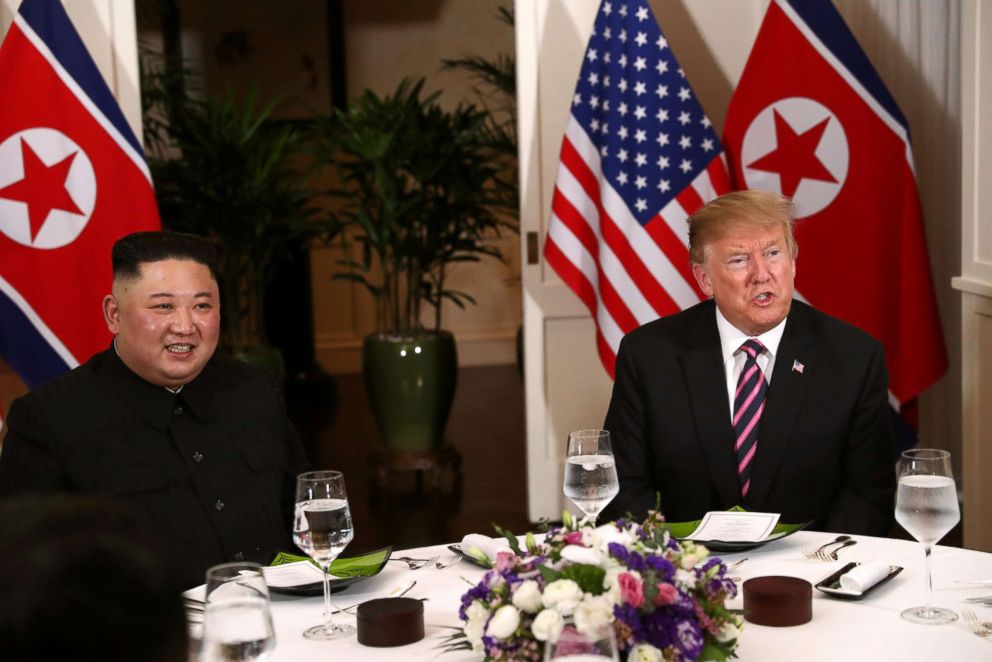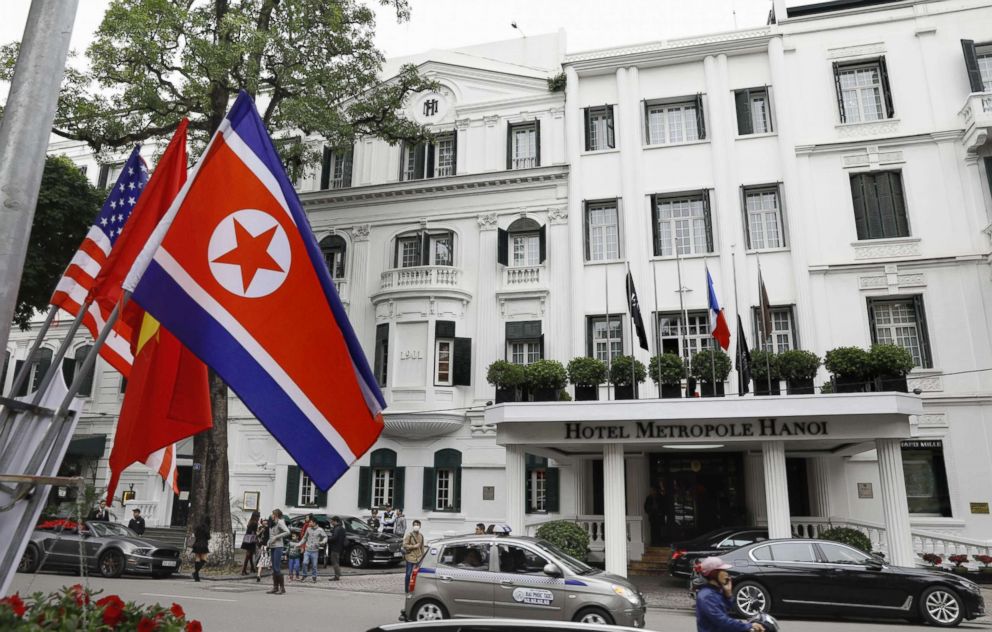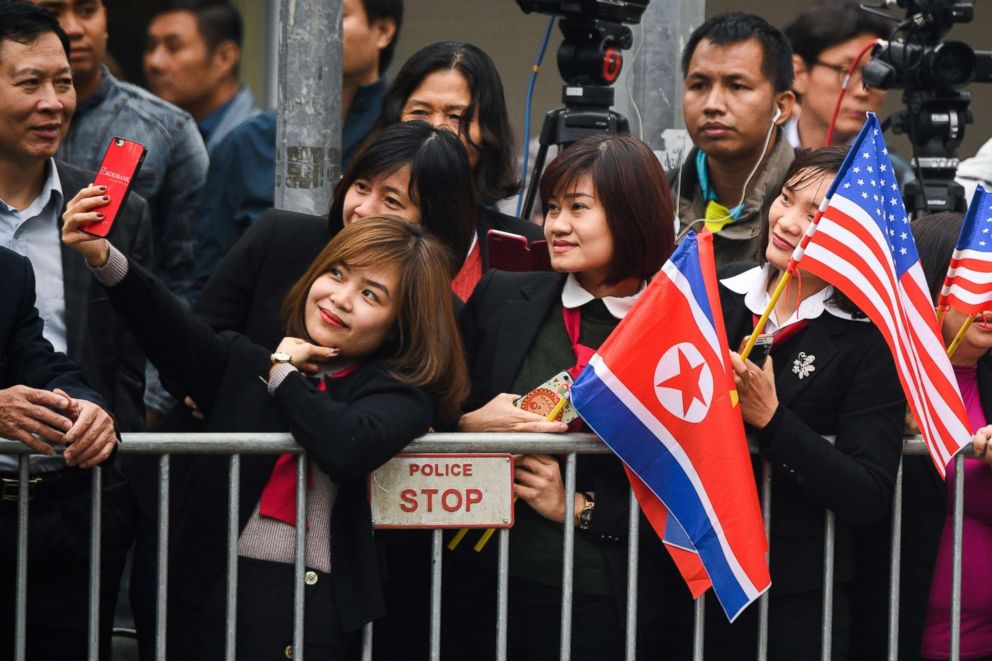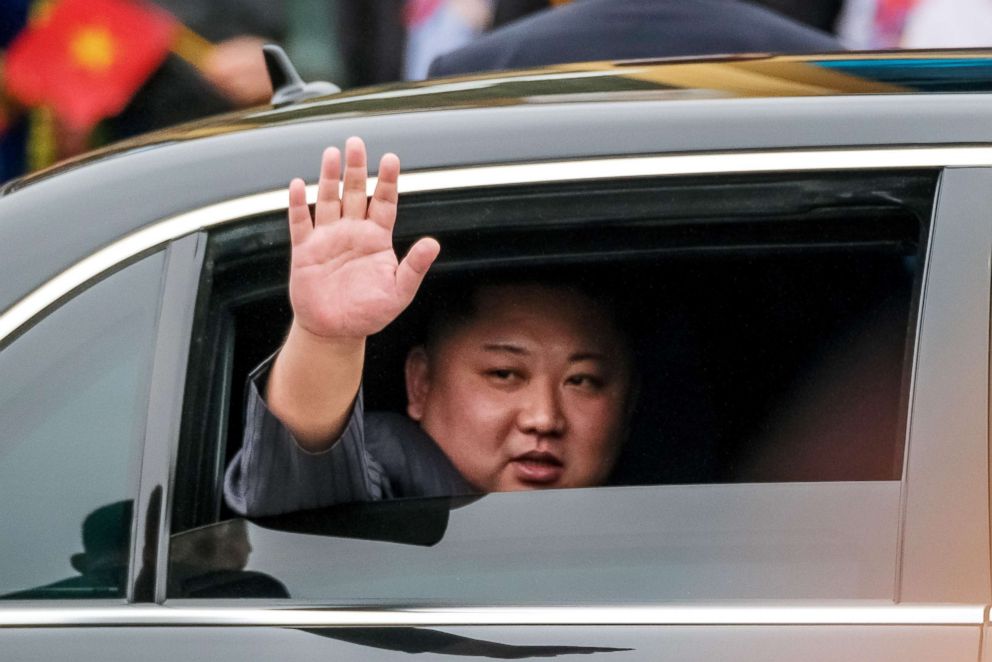Trump hopes 2nd summit with North Korea's Kim will be 'greater' success than 1st as two leaders shake hands
The two leaders dined together Wednesday before Thursday's day of meetings.
Hanoi, Vietnam -- With a handshake and smile, President Donald Trump and North Korean leader Kim Jong Un kicked off their second summit Wednesday evening at the historic Sofitel Legend Metropole Hotel and offered an optimistic outlook for their coming meetings.
"I thought the first summit was a great success and I hope this one hopefully will be equal or greater than the first. And we made a lot of progress and think the biggest progress was our relationship is really a good one," Trump, who has called Kim a "friend," said.
Speaking through a translator, Kim expressed hope that whatever results from the summit would be welcomed by everyone. "I'm sure that we can do this," he added.
Despite the friendly interactions, when asked if he had walked back his vow to denuclearization the Korean Peninsula, Trump simply replied, "No."

Accompanied by their translators, the two leaders held a one-on-one meeting before having a small, private dinner. Sitting at a white table-clothed table, the president was joined by Secretary of State Mike Pompeo and acting White House Chief of Staff Mick Mulvaney. Kim was joined by his two top advisers, former spy chief Kim Yong Chol and Foreign Minister Ri Yong Ho.
Kim said the leaders had "very interesting dialogue" during their one-on-one meeting.
"If you could have heard that dialogue," Trump teased in reply.
The summit begins in full on Thursday with a day of meetings and lunch expected. But first, the president met with the host of the summit, Vietnamese President and General Secretary of the Communist Party of Vietnam, Nguyen Phu Trong at the presidential palace for a bilateral meeting and to sign a commercial trade agreement.
The road to Hanoi, Vietnam, and the second meeting between President Trump and North Korea's Kim has been long: A 10,300-mile flight with two refueling stops for the American president and a 2,500-mile train ride through China and 100-mile drive through Vietnam for the young dictator.
But it's also been a process filled with stops and starts. After tense early meetings, long periods without high-level engagement and a burst of diplomacy in the last month, the two leaders will meet again to advance the "denuclearization of the Korean Peninsula" that they agreed to in Singapore last June.
There's still no agreement on what that term means, however, and both sides are under pressure to win concrete results from the meeting.

While publicly the president appeared to stick to a diplomatic script, on Wednesday morning after his meetings, he tweeted about Sen. Richard Blumenthal, D-Conn., falsifying his military service during the Vietnam War and even said he discussed it with Vietnamese officials.
“I have now spent more time in Vietnam than Da Nang Dick Blumenthal, the third rate Senate from Connecticut (how is Connecticut doing?),” Trump tweeted. “His war stories of his heroism in Vietnam were a total fraud — he was never even there. We talked about it today with Vietnamese leaders!”
White House press secretary Sarah Sanders did not mention Blumenthal or his military record in a readout of the visit. Just hours before his first handshake with Kim, the president also turned his attention to another high profile event at home -- the public testimony of his former attorney Michael Cohen before the House Oversight Committee. In a Twitter attack, the president sought to distance himself from his former fixer.
Once at war with the U.S. and now a growing economic power in Southeast Asia, Vietnam is seen as a potential model for North Korea -- a communist state that maintains tight political control while allowing for some economic liberalization, like private businesses and property. Trump himself offered up the prospect in a tweet, saying Vietnam is "thriving" and North Korea "would be the same, and very quickly, if it would denuclearize."
"We both felt very good about having this very important summit in Vietnam because you really are an example as to what can happen with good thinking," Trump said of he and Kim during his meeting with the Vietnamese president.
Crowds amassed on Tuesday hoping for a glimpse of the reclusive North Korean strongman, who has smiled and waved for cameras. While he seems comfortable as a statesman on the world stage, it was less than a year ago that he'd never left his country while in power. Now, thanks in part to his summit diplomacy with Trump, he's visited China three times, had meetings with leaders in Singapore and Vietnam, and has been invited to Seoul, South Korea.

But it's unclear if Kim wants the kind of economic opening Vietnam has. The third ruler in a hereditary, communist dynasty, he's maintained sharp control over his citizenry, including through prison camps, severe restrictions on access to information and purges of high-ranking officials perceived as disloyal. Allowing outside economic investment could undermine that iron rule.
Instead, Kim's goal in Hanoi is sanctions relief, with his country still under the thumb of United Nations Security Council sanctions over its nuclear weapons proliferation and human rights abuses. While North Korea seeks recognition as a nuclear weapons state and normalized ties with the U.S., Kim may be willing to give up some aspects of his nuclear program in exchange for that relief.
That would likely include inspections of the main reactor and other nuclear facilities at Yongbyon and verification that test sites like Punggye-ri nuclear facility and Sohae missile engine launch site have been destroyed. However, analysts point out those are largely hollow concessions, as those facilities were no longer in use.
Trump is eager for some success on the world stage, lowering expectations this week by saying Sunday, "I'm not in a rush. I don't want to rush anybody. I just don't want testing. As long as there's no testing, we're happy."

North Korea halted ballistic missile and nuclear tests in 2017, in large part because it claims to have perfected its nuclear capability and no longer needs to test. Some analysts doubt that claim, but the lack of testing has helped cool tensions that once prompted Trump to promise to "totally destroy" North Korea if provoked.
But more important, while some say formalizing an end to testing would be a good first step, it does nothing to eliminate North Korea's already existing nuclear weapons, a stockpile reportedly estimated at 20 to 60 bombs and long-range ballistic missiles capable of reaching the continental U.S.
The U.S. intelligence community says Kim and his regime have no intention of giving that up, viewing it as essential to their survival. Trump's chief negotiator, Special Representative Stephen Biegun, conceded that point, but said that's why they are giving summit diplomacy another shot: "It is all the more urgent that we engage diplomatically with North Korea to see if we can change the trajectory of their policies by changing the trajectory of our own," he said last month.

Those changes in U.S. policy could include opening liaison offices in each other's capitals -- diplomatic facilities that would allow for better communication and closer ties.
It may also mean signing a declaration to end the Korean War, which ended with a truce in 1953. While that would be welcome in Pyongyang as a symbol that the U.S. is less of a threat, many analysts criticize it as a means to push U.S. troops from allied South Korea and an empty agreement given the ongoing threat posed by North Korea's arsenal.
The most controversial decision could be providing North Korea some kind of sanctions relief. The Trump administration has been adamant that sanctions would not be lifted until there were concrete steps toward dismantling the regime's nuclear weapons program, but in recent days, Pompeo and others have indicated small sanctions loopholes could be granted to incentivize North Korea.




